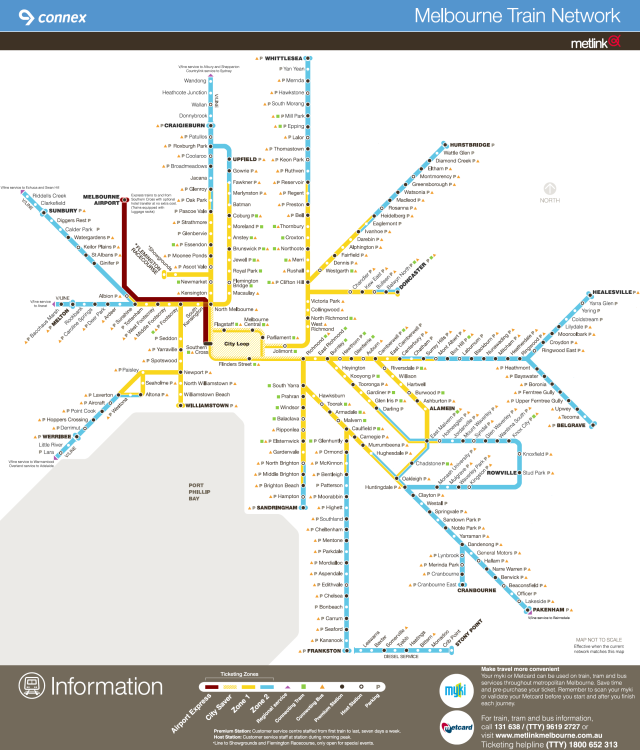
For many years the Manningham council in Melbourne’s northeast, which consists of 10 suburbs, the largest being Doncaster and Templestowe, has been advocating for some form of mass rail transport.
Manningham is the only Melbourne metropolitan municipality without train or tram services. At the 2011 census, Manningham had a population of 111,300 people, 41% of whom are classified as low-income earners — a higher percentage than Melbourne’s average.
Several reports released since the 1970s have detailed the essential need for heavy rail mass transit in the Doncaster corridor, which would run on the median strip of the Eastern Freeway.
Despite rising costs, the state governments of the period continued to make promises that the line would be built. Property acquisition for part of the route was completed in 1975, but seven years later plans to build the line had been shelved by the state government, and by 1984 land for the line was sold.
In December 2008, in response to huge increases of passengers on Melbourne's public transport system and increased road infrastructure problems, the state Labor government released a transport plan. This did not recommend the construction of the Doncaster line but investigated the construction of a freeway through Greensborough, into Heidelberg and through the Yarra and Banyule Flats to connect with the Eastern Freeway at a cost of $6 billion.
The proposal would cost six times as much as the Doncaster rail line and relied on the continued use of private cars. The cost to the environment, the green amenities for residents and the rise in pollution were totally ignored.
In December 2008, a Greens member, David Ellis, was elected to the Mullum Mullum ward in Manningham. He had long campaigned against the construction of the proposed freeway through the Yarra and Banyule Flats. His election indicated a strong support for mass rail public transport.
During the state election in 2010, the Liberal Party promised to commit $6.5 million to complete another study to develop a route for building the railway line to Doncaster. This was budgeted for in 2011 but no funding was set aside for the actual building of the line.
The Minister for public transport, Terry Mulder, released this study group’s Phase One report on March 14. The report recommended a route that would connect with the existing Hurstbridge line at Collingwood and end at the Doncaster Park-and-Ride bus terminal.
It estimated the cost to be between $3 billion and $5 billion.
The Doncaster rail line proposal is almost identical to the Joondalup Line completed in December 1992 and the Mandurah Line opened in December 2007, both in Perth.
Perth is a city with less than half the population of Melbourne. The Mandurah line runs along the centre median of the Kwinana Freeway and through various tunnels. It is almost double the length of the proposed Doncaster line and cost $1.6 billion; trains are able to travel at up to 130 km/h.
Manningham mayor Jennifer Yang said: “Council is surprised by the recommendations to terminate the rail line at the Doncaster Park and Ride and not to extend it to the Doncaster Hill activity centre.” Surveys indicate that 88.3% of trips to Doncaster Hill, the site of a large shopping precinct, are by car.
The study fails to factor in the proposed 10,000 extra residents by 2031 who will live within walking distance of a station at Doncaster Hill and the growth of visitors and staff to the Westfield shopping centre there.
City of Yarra mayor, Jackie Fristacky, said in a statement that “it was disappointing that the report recommended terminating the line at the Doncaster Park and Ride car park rather than continue some 2 kilometres on to service the rapidly expanding major activity centre at Doncaster Hill”.
The City of Yarra has long been a supporter of the Doncaster rail line, believing it would help solve the congestion at the Hoddle Street end of the Eastern Freeway, particularly during peak times. The Eastern Freeway approaching the Hoddle Street exit is consistently Melbourne's most congested road, with about 90,000 cars gridlocked daily on Hoddle Street.
Yang said the report also fails to consider the advantage of catchment zones and improved network operations that a rail line to Ringwood would provide. Ellis said a rail line to Doncaster would reduce the number of cars on the Eastern Freeway, eliminating the need for an east-west road tunnel.
[The public are invited to respond to the recommendations before the study group delivers the second phase this year. The deadline has been extended until June 28. Submissions can be made at doncasterrailstudy.com.]